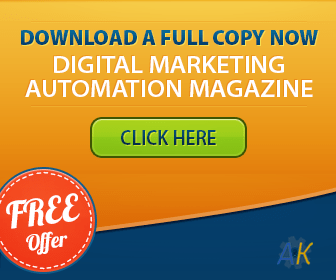The Reality
 The reality is that most businesses don’t do well when it comes to writing emails and render them effective. Rather than using this medium to connect and engage with the customer, they instead focus on milking them for money. This tends to lead to those email ending up in the Spam folder, or with recipients choosing to unsubscribe.
The reality is that most businesses don’t do well when it comes to writing emails and render them effective. Rather than using this medium to connect and engage with the customer, they instead focus on milking them for money. This tends to lead to those email ending up in the Spam folder, or with recipients choosing to unsubscribe.
If you are constantly sending out “mediocre at best” emails, then the reality is that your subscription list is essentially worthless. It will only get worse if you don’t change your email tactics.
Research has shown that emails are potentially 40 times more likely to convert than social media campaigns, but only if the emails are focused and engaging.
Being told that your email marketing stinks may not be an easy pill to swallow, but luckily, we’re going to reveal 5 easy steps to becoming a better email marketer.
Let's take a look:
Step 1: Deliver a Killer Subject Line
 Focusing on the email body to be as engaging as possible is great – but it’s all for nothing if you don’t give any thought to the subject line.
Focusing on the email body to be as engaging as possible is great – but it’s all for nothing if you don’t give any thought to the subject line.
It’s the subject line that serves as the first impression to the email recipient, so it’s critical to come up with something that is exciting and compels people into opening your email. The subject line should let them give them an idea on what’s inside and it’s in their best interest to open it.
Here’s some tips we use:
- Short Subject Lines are Best: Ideally, a good subject line is around 6-10 words long. You can deliver a big punch without getting too wordy.
- Address a Current Problem: Email recipients are more likely to click and open subject lines that address an issue they are currently facing. For example, if you are trying to sell marketing services, you might use a subject line such as: “5 Ways to Improve Your Marketing Skills Starting Today.”
A tool like Wordstream is a highly effective to have in your marketing arsenal, and they offer 9 different subject line options that will help you achieve the results you desire:
- The Simple, Straight to the Point Email Subject Line – Something like, “Your Order is Being Processed Now.”
- The Humorous Email Subject Line – For example, “Deals That Make Us Proud (Unlike Our Nephew, Steve)”
- The Controversial Email Subject Line – For example, “Why Your Teenager Knows More About Social Media Than Your CMO.”
- The Single Word Subject Line – For example, “Hi”
- The Numbered List Subject Line – For example, “3 Reasons You Should Schedule Your Consultation Today”
- The Personalized Subject Line – For example, “David, Great Dining Deals Available Close to Home!”
- The Question or Punctuation-Heavy Subject Line – For example, “Last Chance! Do You Want to Save 50% Today?”
- The Scarcity Subject Line – For example, “Ends Today! Get in now Before all our Deeply Discounted Jeans are Gone.”
- The Mysterious Subject Line – For example, “It’s all ends in 3 short days…”
Step 2: Be Smart with Your Header
If you are using email templates, like on Mail Chimp, or Constant Contact they most likely have a pre-filled header section. But you are free to customize this area, and you should – In order to make use of that prime real estate.
Think of the header area as “bonus space” in between your subject line, and your greeting. It allows you to expand on your original subject line, or a place to explain a little about the content of the email. Creating a 7-10-word subheading that makes the recipient want to read the email in its entirety is the primary goal with this tip.
Step 3: Let Your Personality Shine
 The assumption is that business emails need to be dry and impersonal – but that is not the case. Write the email as though you were talking face to face with the recipient, which means adding your unique personality.
The assumption is that business emails need to be dry and impersonal – but that is not the case. Write the email as though you were talking face to face with the recipient, which means adding your unique personality.
Spacing is also important, as being faced with a text-filled page can be daunting to some. Make your point, but do it in a way that is straightforward, and holds the reader’s interest at the same time.
An email template is an excellent starting point for your newsletter, but it is your personal touches that make it unique and interesting. Adding a simple PS at the end of your text not only adds a little extra value and urgency, it also makes the reader feel as though you are confiding in them.
Step 4: Try to Include Images
While spacing is important to make the text seem less daunting, images can also perform the same task, while also adding some flair to your emails. Try to steer clear of the usual, tired stock images, and use the following sites to find unique photos that match your content. Note: be aware of the rules for commercial use before using any image.
Here are some great sites we use that offer up excellent images:
- Flicker/Creative Commons
- Compfight
- Photo Pin
- Pixabay
- Freeimages
- Stockvault
- Unsplash
- morgueFile
Still images are great, but you can draw even more attention using animated GIFS and videos. These types of images are becoming increasingly popular in email marketing, and there are a few places online where you can create your own GIFS:
- GIFMaker.me
- MakeAGIF.com
- GifDec
Bonus Tip: Design Smartphone-Friendly Emails:
Smartphones are how many people connect to the internet nowadays, with as many as 67% using mobile devices to access their email. Make sure that you email provider offers responsive design, which will ensure your emails fit the screen on which they are opened.
As a marketer, there’s really no better ROI than a well-executed email marketing campaign and should still be considered an important part of your total marketing strategy. Here is a recap of the tips to use to create engaging emails:
- Deliver a Killer Subject Line
- Be Smart with Your Header.
- Let You Personality Shine.
- Try to Include Images
- Design Smartphone-Friendly Emails.
As you can see, the 5 tips listed above aren’t rocket science, and are pretty easy for anyone to implement. Apply them to your next email campaign and judge for yourself.
It is going take some time (and effort) to dial in. But I guarantee that you will see positive results if you take a little extra time to deliver something of real value to your subscribers.












